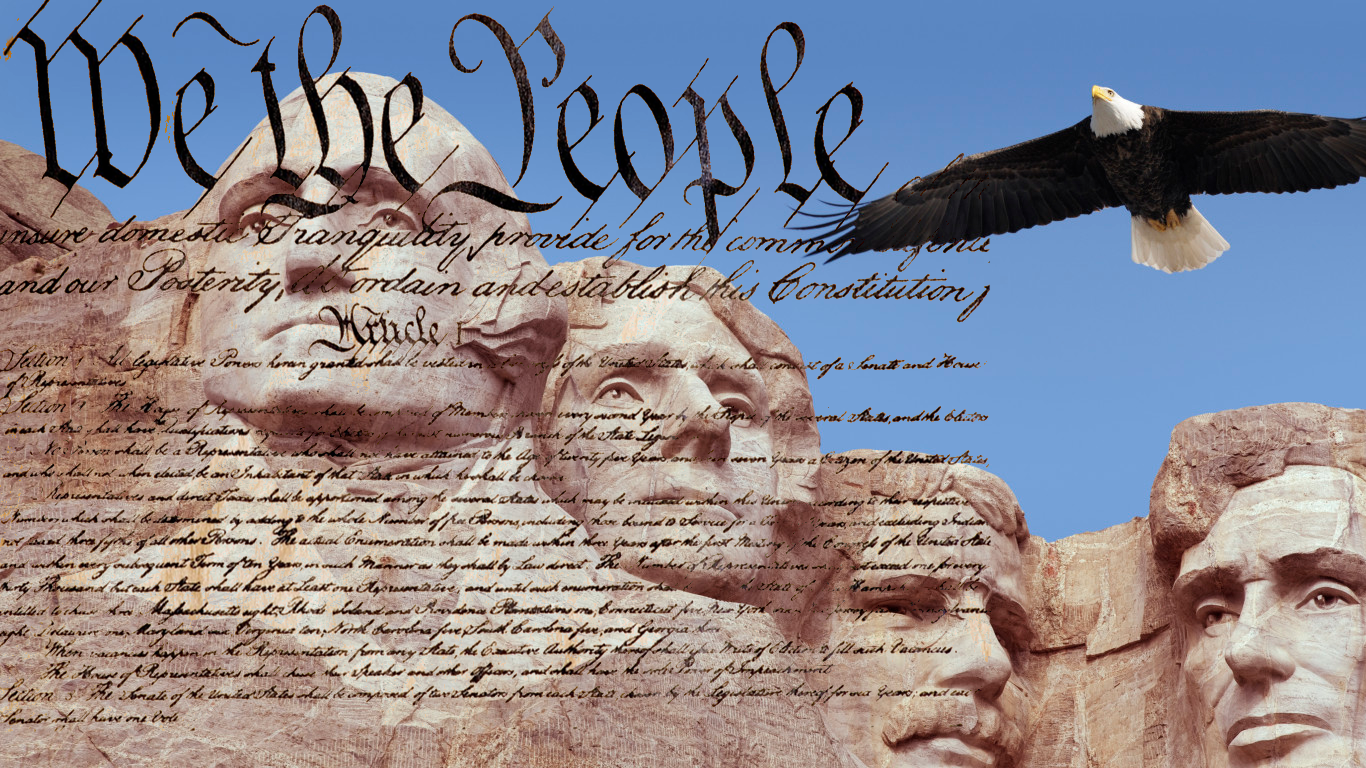Agents from several federal agencies in the New York area arrested 54 previously deported criminals…
Enforcement / ICE / DHS
ICE Says International Students Must Take Classes in Person or Leave the Country

As the COVID-19 pandemic continues to surge across the United States, many universities have chosen to temporarily move to online-only classes to protect public health. However, new guidance from the Trump administration will not allow international students to stay in the United States if their classes move online this fall. U.S. Immigration and Customs,
As the COVID-19 pandemic continues to surge across the United States, many universities have chosen to temporarily move to online-only classes to protect public health. However, new guidance from the Trump administration will not allow international students to stay in the United States if their classes move online this fall.
(ICE) oversees the program and the data/tracking system schools use to enroll international students. Over one million students participate in the program each year. This allows them to study at K-12 schools, colleges, universities, seminaries, conservatories, and language training programs.
By regulation, academic students (F-1) are limited to one online class or three credit hours per term as part of their full course load. Vocational students (M-1) cannot take any. When the COVID-19 pandemic first hit in March, ICE issued temporary exemptions allowing international students to move to online-only classes during the spring and summer semesters. ICE originally stated that these exemptions would apply “for the duration of the emergency,” but now will not continue into the fall.
Students whose programs have moved fully online will no longer be allowed to remain in the United States. They either “must depart the country” or transfer to a school offering in-person instruction. If they do not leave the United States or transfer, ICE says that students “may face immigration consequences including, but not limited to, the initiation of removal proceedings.”
The restrictions apply to both incoming and continuing international students. If an international student wishes to attend an American school that only offers online classes, the student won’t be granted a visa.
Students already in the United States would have to transfer universities or leave the country even if their program switches to fully online partway through the semester. Exceptions exist for the very limited number of students who qualify for a reduced course load or medical leave.
Students whose programs switch to a “hybrid” model, with some in-person classes and some online classes, can remain in the United States. However, these students will need certification from their university that they are taking the minimum number of online courses possible. Students in vocational or English language training programs will not be allowed to take any online classes.
Many universities have already announced that they will be holding classes completely or partially online this fall. The majority plan to hold in-person classes, but 9% plan to hold classes fully online, 24% are planning for a hybrid model, and 7% have not yet decided.
These decisions could change depending on the progression of COVID-19 over the summer. Yet ICE has imposed very short deadlines on universities to update operational plans and issue new eligibility certificates to international students.
Coronavirus: International students react to U.S. decision they must leave if taking online courses
Two international students studying in the U.S. reacted on Tuesday to the decision by the government that they will have to leave the country if their classes are all taught online this fall, with one student saying he was crying upon hearing the news because he would face difficulty, both in returning home due to no flights and in school due to internet capacity in his home country of Venezuela.
Another student from the Bahamas said while her school is offering in-person classes, she was cautioned it could change due to a local COVID-19 outbreak, which she worries would prevent her from completing her MBA. The U.S. Immigration and Customs Enforcement (ICE) said it would not allow holders of student visas to remain in the country if their school was fully online for the fall.
ICE said these students must transfer to schools that teach in-person classes or leave, or they potentially face deportation proceedings. As the COVID-19 pandemic continues to hit the U.S., with cases passing three million, colleges and universities have begun to announce plans for the fall 2020 semester, with Harvard stating it would conduct course instructions online, while Eastern Kentucky University plans to hold classes in-person.
This is bad. ICE just told students here on student visas that if their school is going online-only this fall, the students must depart the United States and cannot remain through the fall semester. https://t.co/8DteVzexLB pic.twitter.com/OfkWRKFZZE
— Aaron Reichlin-Melnick (@ReichlinMelnick) July 6, 2020
The end of the exemptions will impose an unreasonable hardship on students and universities. Students may not be able to participate in online courses from their home countries due to internet connectivity issues or time differences. Certain online resources are not available in some countries, such as G Suite in China. Some students may not be able to return home due to financial hardship or ongoing COVID-19 travel bans. For some, returning would mean separation from a U.S. citizen spouse or child.
Academic institutions are already under financial pressure, with enrollment dropping due to the economic recession and loss of the in-person college experience. Students who cannot study this semester might not return to their programs later, choosing to drop out. Some who try to return may be prevented from doing so by COVID-19 travel restrictions. ICE’s guidelines force schools to choose between losing international students and risking public health. The decision also damages the United States’ reputation as a leader in international education.
Harvard University, which recently announced that its classes will be completely online in the fall, stated:
“This guidance undermines the thoughtful approach taken on behalf of students by so many institutions, including Harvard, to plan for continuing academic programs while balancing the health and safety challenges of the global pandemic.”
Losing international students could also result in an economic loss at a time when the U.S. economy is already in trouble. International students contribute over $40 billion to the economy and support over 400,000 jobs each year.
The COVID-19 pandemic has required unprecedented flexibility in procedures at every level of our society. Immigration should be no different. Immigration agencies should make exceptions to requirements that cannot reasonably be followed during the pandemic.
Source: ICE Says International Students Must Take Classes in Person or Leave the Country
, 

Courts / Judicial
Federal appeals court overturns ban against immigration arrests at Massachusetts courthouses

A three-judge panel of the US Court of Appeals for the First Circuit Tuesday overturned a ban prohibiting US immigration authorities from arresting undocumented immigrants at courthouses in Massachusetts. In 2018, US Immigration and Customs Enforcement (ICE) formalized a policy of attempting to arrest undocumented immigrants when they appeared at state courthouses for judicial,
A three-judge panel of the US Court of Appeals for the First Circuit Tuesday overturned a ban prohibiting US immigration authorities from arresting undocumented immigrants at courthouses in Massachusetts.
In 2018, US Immigration and Customs Enforcement (ICE) formalized a policy of attempting to arrest undocumented immigrants when they appeared at state courthouses for judicial proceedings. Two Massachusetts district attorneys, the public defender’s office and a non-profit immigrant advocacy organization filed a lawsuit against ICE and asked for a preliminary injunction against the practice. They claimed that ICE was in violation of the Immigration and Nationality Act (INA) and lacked authority to make civil arrests at courts. The district court agreed, and granted an injunction last year.
At issue is a claim that the INA implicitly incorporates a common law privilege that protects those attending court from being subject to civil arrest. While nothing in the text of the INA prohibits these types of courthouse arrests, the plaintiffs argued that the law must be read in light of the nonderogation canon, a method of statutory construction that holds that courts must assume Congress is aware of long-standing common law principles and, absent express language to the contrary, intends to keep them.
Judge Bruce Selya wrote Tuesday that “the nonderogation canon does not give courts carte blanche to read a grab bag of common law rules into federal statutes simply to effectuate what those courts may perceive as good policy.” The circuit court held that the nonderogation canon applies if the facts of the common law rule and the statute in question are sufficiently analogous. The common law prohibited civil arrests at court by private litigants, while here the arrests are being carried out by a government agency. The panel vacated the preliminary injunction and remanded the matter back to the district court.
Rachael Rollins, district attorney for Suffolk County and one of the plaintiffs in the case, said in a statement that “this fight is far from over” and that the plaintiffs “are absolutely on the right side of justice here.”
The post Federal appeals court overturns ban against immigration arrests at Massachusetts courthouses appeared first on JURIST – News – Legal News & Commentary.
Source: Federal appeals court overturns ban against immigration arrests at Massachusetts courthouses
,
Enforcement / ICE / DHS
Traffic From Mexico Blows Through U.S. Travel Restrictions

President Donald Trump’s ban on “non-essential” border travel isn’t slowing down traffic coming from Mexico. Since the March 20 order was extended to Sept. 21, volumes have increased and sharply in some areas. San Ysidro, the busiest port of entry in California, saw a 72 percent rise in northbound pedestrian crossings from April to July.,
President Donald Trump’s ban on “non-essential” border travel isn’t slowing down traffic coming from Mexico. Since the March 20 order was extended to Sept. 21, volumes have increased and sharply in some areas.
San Ysidro, the busiest port of entry in California, saw a 72 percent rise in northbound pedestrian crossings from April to July. The number of private vehicle passengers rose 62 percent, and the number of private vehicles increased 47 percent.
Pedestrians and private-vehicle passengers coming through San Ysidro combined for a total of 1,693,338 crossings in July, compared to 1,031,906 in April.
El Paso, the biggest border crossing in Texas, recorded a whopping 220 percent increase in pedestrians from April to July. Vehicle passenger counts were up 106 percent, with the number of vehicles climbing 79 percent.
Pedestrians and vehicle passengers at El Paso combined for 963,457 crossings in July, compared to 419,046 in April.
The tallies by the U.S. Department of Transportation include individuals who enter the country multiple times per month. The crossings may or may not be “essential”; U.S. Customs and Border Protection has not reported how many people are turned back.
But following a pattern FAIR reported on last month, entries into this country are increasing substantially at the southern border, even as Americans remain under coronavirus restrictions.
U.S. ambassador to Mexico, Christopher Landau, cited five- and six-hour delays at ports of entry as border agents focus on “essential travel.” He said many were crossing to shop, dine and visit families. “Such irresponsible behavior is exacerbating the health crisis,” he said.
Border counties in Texas have reported spikes in COVID cases and hospitalizations. Officials in Starr and Hidalgo counties started imposing curfews and voluntary stay-at-home directives in July, urging that non-essential business activities be curtailed or suspended.
Yet despite presidential edicts and local pleas, border traffic keeps building. At current rates, crossings will be back to pre-COVID levels by the time the administration’s non-essential travel ban expires — if they’re not already.
Source: Traffic From Mexico Blows Through U.S. Travel Restrictions
,
Enforcement / ICE / DHS
Institutional Racism Is Rampant in Immigration Enforcement at the U.S.-Mexico Border

A Black former U.S. diplomat recently shared her experience of months of racial profiling by U.S. Customs and Border Protection (CBP) officials while she was stationed at the U.S. Consulate in Ciudad Juárez, Mexico. She was tasked with enforcing U.S. immigration law, but nevertheless found herself racially profiled and discriminated against by U.S. immigration,
A Black former U.S. diplomat recently shared her experience of months of racial profiling by U.S. Customs and Border Protection (CBP) officials while she was stationed at the U.S. Consulate in Ciudad Juárez, Mexico. She was tasked with enforcing U.S. immigration law, but nevertheless found herself racially profiled and discriminated against by U.S. immigration authorities.
The problem became so severe that she now suffers from post-traumatic stress disorder and had to quit her job. Unfortunately, this is just one example of immigration officials’ long history of racism at the border.
CBP Racially Profiles a U.S. Diplomat
In 2018, Tianna Spears was a new diplomat stationed at the U.S. Consulate in Ciudad Juárez, Mexico. She frequently crossed the border into El Paso, Texas, as thousands of other U.S. citizens do every day. However, she soon found that she was treated differently than others by CBP officers at the border.
Spears estimates that CBP officers required her to go through “secondary inspection” approximately two out of every three times that she crossed. This outcome should have been extremely rare given her diplomatic passport and SENTRI card allowing for expedited clearance. Her non-Black colleagues never had similar experiences.
Spears repeatedly raised the issue to CBP and her consulate supervisors, but the situation only worsened. She reports that CBP officers sometimes did not believe she was a diplomat and accused her of stealing her car. Their questioning was aggressive and threatening.
The mental health effects of the harassment eventually forced her to leave her job and return to the United States.
CBP Has a Long History of Racism
There is a long and documented history of immigration officials engaging in racial profiling and harassment at ports of entry.
Throughout the first half of the 20th century, Mexican citizens crossing into El Paso had to undergo a delousing process. CBP officials stripped them, shaved their heads, and forced them to take a bath in gasoline. This discriminatory process was based on a stereotype that Mexicans were dirty and diseased.
Much more recently, the Office of the Inspector General found that CBP improperly retaliated against one of their officers that reported misconduct he observed within the agency. The officer stated that CBP was disproportionately targeting Black drivers for further inspection at the ports of entry between Detroit, Michigan and Windsor, Canada.
But CBP’s history of racial profiling is not limited to people crossing the border. The agency also has the power to stop and question people within 100 miles of borders or coastlines. Approximately two-thirds of Americans live within this area, which is sometimes called the Constitution-free zone.
Border Patrol Targets People Who “Look Mexican”
CBP’s activities within the border zone are performed by one of its component agencies, the Border Patrol. The Border Patrol has targeted border residents appearing to be of Mexican descent for almost 100 years. Throughout that time, people going about their daily lives near the border have been racially profiled, stopped, and interrogated—regardless of U.S. citizenship or immigration status.
In 1975, the Supreme Court ruled that “Mexican appearance” could not be the sole reason a roving Border Patrol officer stopped someone. It could, however, be a “relevant factor” in deciding whether to do so.
The Border Patrol runs permanent and temporary checkpoints on roads leading away from the border. A 2015 American Civil Liberties Union report Guilty Until Proven Innocent revealed that CBP officers working at checkpoints racially profiled and even interfered with the medical care of border residents.
Residents of Arivaca, Arizona conducted observations of the checkpoint at the entrance to their community. Latino-occupied vehicles were more than 26 times more likely to be required to show identification while passing through the checkpoint.
In 2014, the Department of Justice modified its guidance on officers discriminating based on race or ethnicity. Previous loopholes gave law enforcement permission to discriminate. However, other loopholes remain, including some for CBP activities at or near the border.
Stories like that of U.S. diplomat Spears serve as examples of the historical and institutional racism within CBP and the U.S. immigration system more broadly. We need increased transparency and oversight to force cultural changes within CBP. These significant changes are necessary to prevent further injustices and ensure the Constitution applies equally to all people.
Source: Institutional Racism Is Rampant in Immigration Enforcement at the U.S.-Mexico Border
,
-

 Un5 years ago
Un5 years agoPERM Process Flow Chart
-

 Enforcement News15 years ago
Enforcement News15 years agoFake ID Makers Arrested In Dallas
-

 BREAKING5 years ago
BREAKING5 years agoPERM Recruitment Advertising, How It Works.
-

 Today's News13 years ago
Today's News13 years agoImmigration: Gangster Tats = Visa Denied
-

 BREAKING5 years ago
BREAKING5 years agoUSCIS Statement Throws Constitution Out the Window
-

 BREAKING3 years ago
BREAKING3 years agoHouse Republicans push asylum restrictions, border security
-

 BREAKING4 years ago
BREAKING4 years agoDeSantis parts with Trump in response to Surfside tragedy
-

 BREAKING3 years ago
BREAKING3 years agoBiden is ignoring immigration issues, voters say in poll




